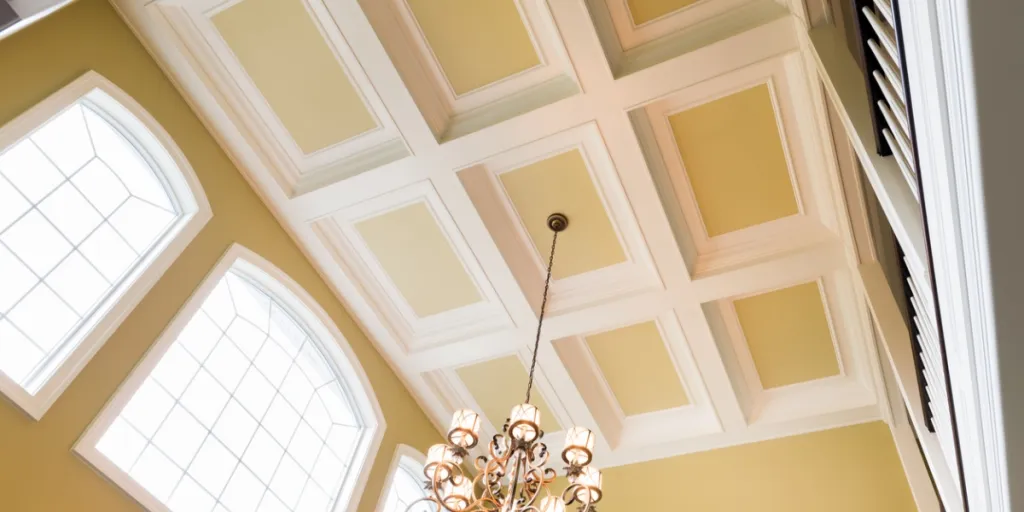One may think that coffered ceilings can only be found in European palazzos, museums, and the classic old colonial house on the hills. But the reality cannot be further from that.
With their eye-catching, intricate patterns, coffered ceilings have long been associated with luxury and sophistication and now adorn many homes and apartments around the globe. These bold architectural elements featuring recessed panels, geometric structures, beams, and ceiling décor are coming back in contemporary interior design and are now adding depth, dimension, and grandeur to any home.
After a small introduction to the history and evolution of coffered ceilings, this article explores their resurgence in today’s trends. It offers interior designers and retailers hot tips on capitalizing on this timeless interior element with some contemporary twists.
Table of Contents
The evolution of coffered ceilings
Modern trends in coffered ceilings
Final thoughts
The evolution of coffered ceilings
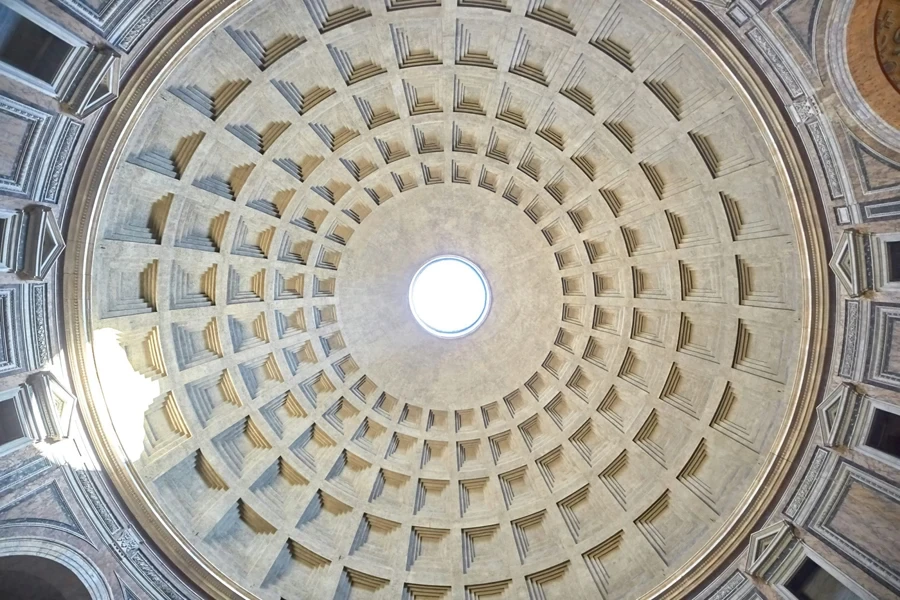
Coffered ceilings have a rich history that dates back to Roman and Greek architecture. At that time, coffers in the high ceilings of temples and public buildings were often made of stone or marble and served both decorative and structural purposes as they helped to reduce the weight of large roofs.
During the early Renaissance, coffered ceilings experienced a new phase of popularity, especially in France, Italy, and England. It’s not a case that the term “coffer” comes from the French word “coffre,” meaning “chest” or “box.” Renaissance artisans made them in carved and decorated wood, introducing complex ornamental motifs, often enriched with gilding, paintings, and other decorative techniques.
Another return in trend
Today, coffered ceilings are going through their second Renaissance in interior design. With people wanting to reclaim historic architectural elements of rooms and buildings, the huge success of historical TV shows like Bridgerton, and the desire to personalize living spaces with unique details, coffered ceilings are making a comeback that interior designers, architects, and home goods retailers just cannot ignore.
Modern trends in coffered ceilings
Coffered ceilings have been an interior design trend for the last couple of years. Of course, the contemporary interpretation of this element is a mix of tradition and innovation, featuring materials, color schemes, and technologies of our time.
Materials and sustainability
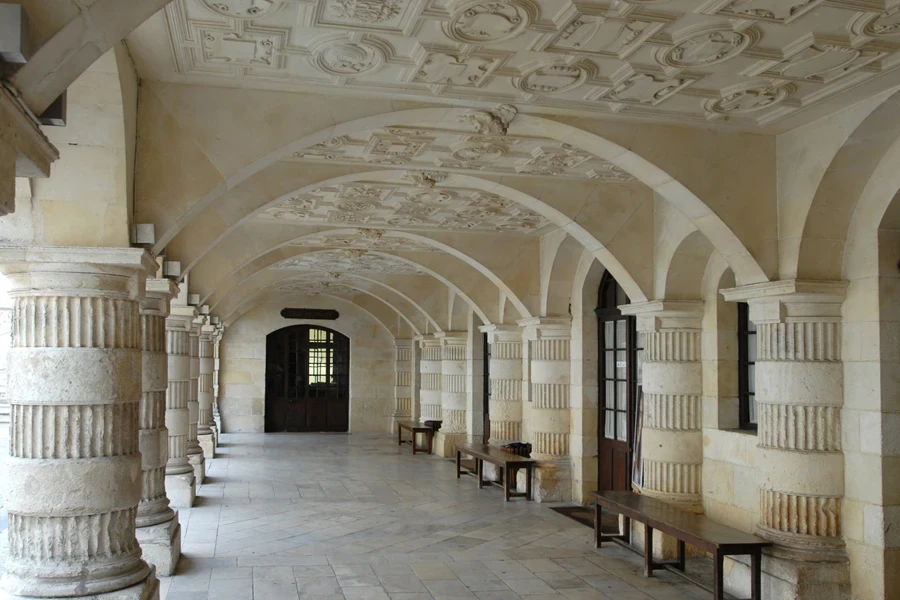
Wood has been used for centuries to create coffered ceilings, and it remains the most common material. It’s lightweight and easy to carve and decorate, allowing for various patterns and styles, from traditional wooden coffered ceilings with a series of sunken panels to grid patterns of rectangles and exposed ceiling joists and beams.
In line with the growing environmental concern, many consumers have opted for sustainable materials, such as certified wood, bamboo, and other recycled materials, which are becoming popular choices for eco-conscious consumers.
Plaster and gypsum are also great choices, as they allow for very fine and intricate detailing and the creation of interesting architectural details, such as crown molding, which will become a focal point in any room. Plaster is often used with other materials or as a decorative cladding over a wooden or metal support structure.
Speaking of which, metal is less common in coffered ceilings. However, wrought iron or bronze can occasionally appear in a ceiling grid, for example, for a contemporary take in modern buildings or in renovations of historic buildings that require greater durability and fire resistance.
Lastly, materials such as concrete, which offer greater strength and durability, can be used in contemporary projects, although their application can be more complex than traditional materials.
Color schemes
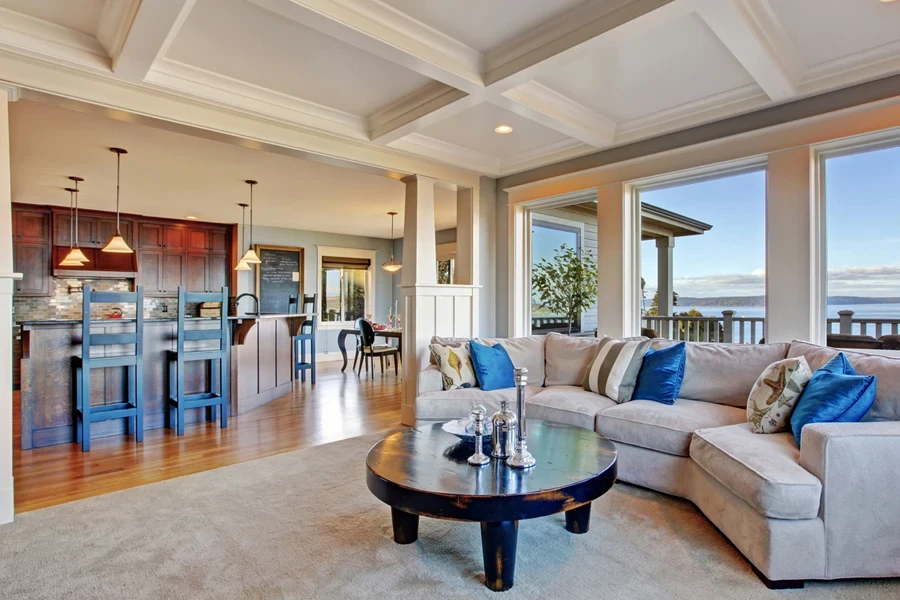
Of course, in ancient times, coffered ceilings were made of dark natural stone and wood and were painted only occasionally with white paint. However, nowadays, people like experimenting with different colors and even going bold sometimes.
The color usually depends on the ceiling height and architectural style of the dining room or living room. High ceilings can take dark, moody colors like the trendy moss green, charcoal gray, or navy blue that are becoming popular to create a dramatic contrast with light walls.
At the same time, people choose softer options like pastel colors for lower ceilings, as that can provide a smoother, more welcoming look, especially when the ceiling features a grid pattern.
Of course, the modern coffered ceiling is a contemporary evolution of the traditional one, which adapts its aesthetic and functional characteristics to today’s needs and tastes. This reinterpretation maintains the basic idea of the grid of hollowed-out panels but uses innovative materials, techniques, and designs to create elegant and distinctive environments.
Lighting trends
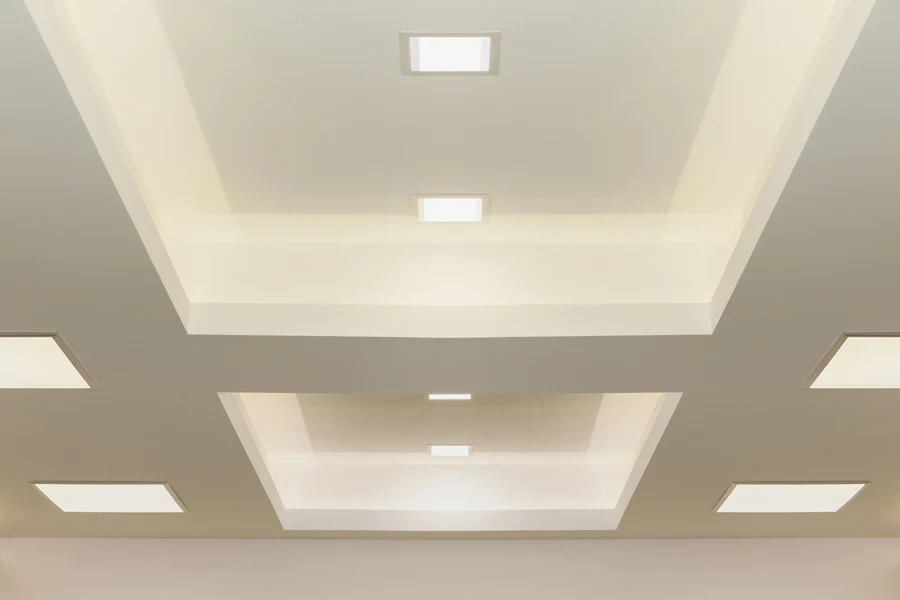
Centuries ago, people lit their spaces with chandeliers and sconces on the walls. Today, many consumers worldwide opt for integrating LED strips into coffered ceilings or onto beam sides. This solution does not only illuminate the room uniformly but also accentuates the ceiling details, creating a striking visual effect.
Those who choose indirect lighting love to place LED strips along the inside edges of the coffered ceilings; they create soft and diffused lighting, which reduces shadows and adds depth to the ceiling. Another popular method is cove lighting, a type of hidden lighting that reflects light on the upper surfaces of the coffered ceilings and is incorporated into ledges.
To create direct lighting, interior designers usually use recessed spotlights in the coffered ceilings that project light directly downward. They are useful for creating points of light focused on specific areas, such as dining tables or desks.
Custom designs and restorations
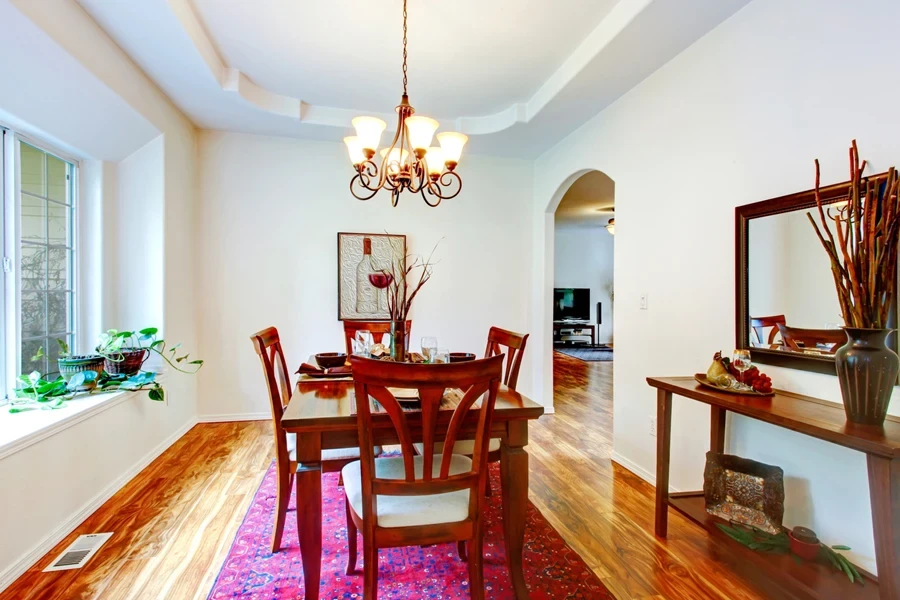
Restoring a coffered ceiling is a complex process that requires attention to detail, specialized skills, in-depth knowledge of traditional and modern techniques, and, of course, the creation of custom-made coffered ceilings.
The main goal is to preserve the historical and artistic integrity of the ceiling while improving its structural stability and adding more of the customer’s taste and vision. Consumers increasingly want unique spaces that reflect their style and search for custom design options, such as geometric patterns or the inclusion of decorative elements.
Final thoughts
Coffered ceilings are a timeless design element that has been reinvented over and over to adapt to the trends of each period. Their ability to transform a space and add aesthetic and perceived value to a home or apartment makes these incredible ceilings an excellent choice for furniture retailers, architects, and designers.
Offering a range of options that reflect the latest trends and the customers’ tastes can help store owners capture the attention of an increasingly demanding and detail-oriented market.
